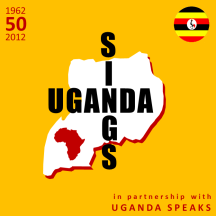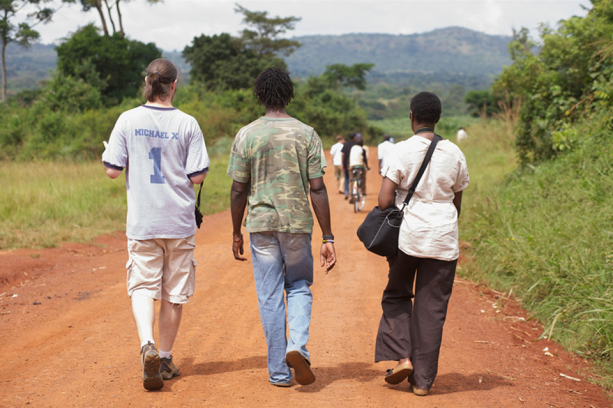Ugandan barkcloth is an environmentally-friendly, renewable material which originates from the Buganda Kingdom in Uganda. Its cultural importance was recognized by UNESCO in 2005 when barkcloth was included in the List of the Intagible Cultural Heritage of Humanity. Traditionally the material, which predates the introduction of cotton and weaving, was popular for clothing and royal ceremonies, including king’s coronations. It’s still an honored tradition for Baganda to use barkcloth for burial ceremonies.
The transformation of the tree bark to a fabric is labor intensive. The bark of the indigenous mutuba tree is carefully removed and then alternately soaked and beaten with a grooved wooden mallet. This process takes hours. The material is then placed in the sun to dry, which produces a natural terracotta color. The tree regenerates its bark enabling it to be harvested again months later.
Barkcloth has been slowly disappearing to modern conveniences and the lack of interest from new generations. Knowledge of barkcloth outside of the region has usually been associated with crafts and novelties made for tourists.
Barkcloth has found a rising interest in the fashion and design world. The resurgence has been led by creative and innovative people focused in the eco fashion market. Eco fashion, also called sustainable fashion, is a part of the growing design philosophy and trend of sustainability, the goal of which is to create a system which can be supported indefinitely in terms of environmentalism and social responsibility.
Several fashion designers have featured barkcloth in their collections on runways from Kampala to Berlin to London to Vancouver. These include Santa Anzo, Bobby Kolade, José Hendo and Gala Limon.
Award winning designer José Hendo takes a fresh and sustainable approach to contemporary fashion design, challenging the obsolescent nature of fashion and throw away culture. Her collections have been seen in British Vogue and at Vancouver Fashion Week.
I chose to combine good design with eco sustainable fashion, using the three Rs:
Reduce. Reuse. Recycle.
José Hendo
The demand for barkcloth provides skilled craftsmen with a source of income that helps their families and communities. This can be vital to impoverished villages in Uganda. It facilitates an economic system of trade, not aid.
Deforestation in Africa is a serious issue. It affects the environment, climate and wildlife. Planting mutuba trees is a great way to combat deforestation. The tree provides a natural habitat for the diverse wildlife in Uganda. It also doesn’t damage the health of the soil for future use, as is the case with other species of trees which have been planted in Uganda for various reasons.
Ugandan barkcloth. Paving the way for a beautifully better world.
Resources
- Ugandan artist Fred Mutebi is a master woodcut printmaker. He leads community-based initiatives in Uganda involving the creation, awareness and use of barkcloth.
- The Ugandan Bark Cloth Project showcases people, places and organizations involved in the preservation and use of Ugandan barkcloth. It is curated by University of North Texas fabrics professor Lesli Robertson, who specializes in Ugandan cultural arts and barkcloth.
- University of North Texas hosted a barkcloth exhibition highlighting sustainable art.
- Venny Nakazibwe is a professor at the Margaret Trowell School of Industrial and Fine Arts at Makerere University in Kampala, Uganda. She has devoted her academic career to the study of barkcloth.
- José Hendo is a fashion designer based in the United Kingdom.
- Gala Limon is a fasion designer based in Mexico.
- Bobby Kolade is a fashion designer based in Germany.
- German-based BARK CLOTH® is pioneer of bark fiber development and production. They provide material to a variety of designers, entrepreneurs and businesses while maintaining a sensitivity to the environment and a transparency to their supply chain.
- UNESCO includes Ugandan barkcloth in the Proclamation of Masterpieces of the Oral and Intangible Heritage of Humanity.
- The Buganda Kingdom is a subnational kingdom in Uganda. Barkcloth originated from the kingdom and has profound historical and cultural significance.



















